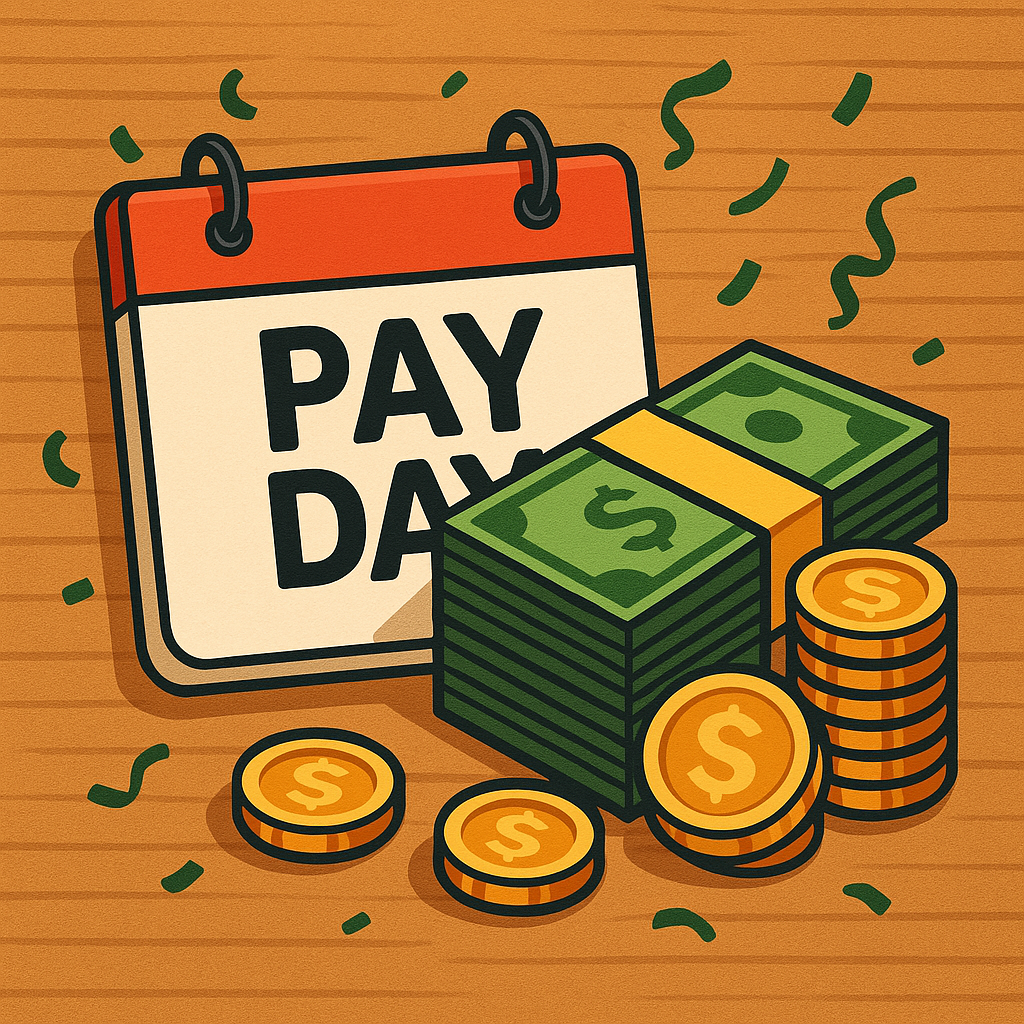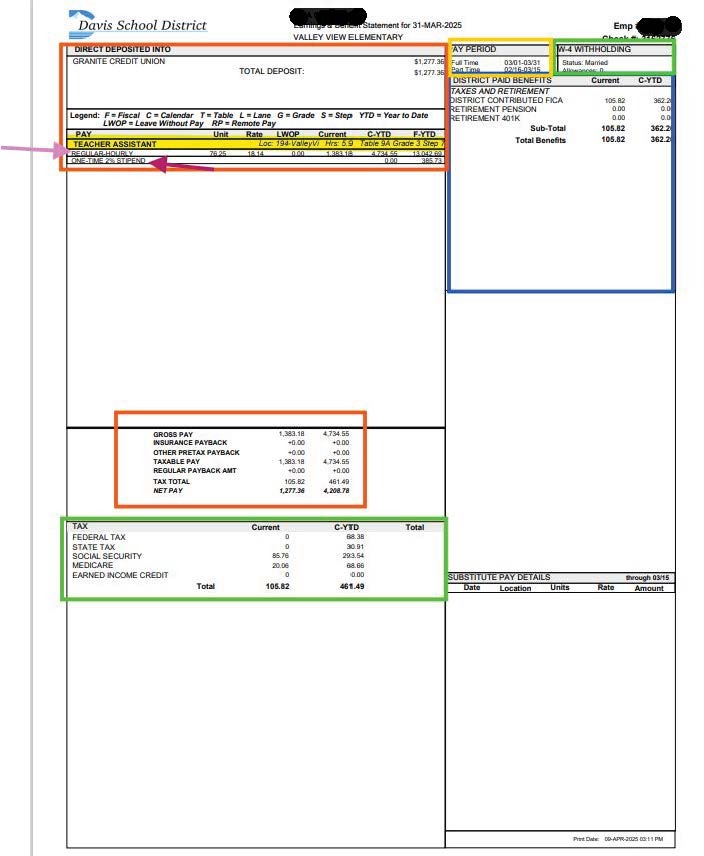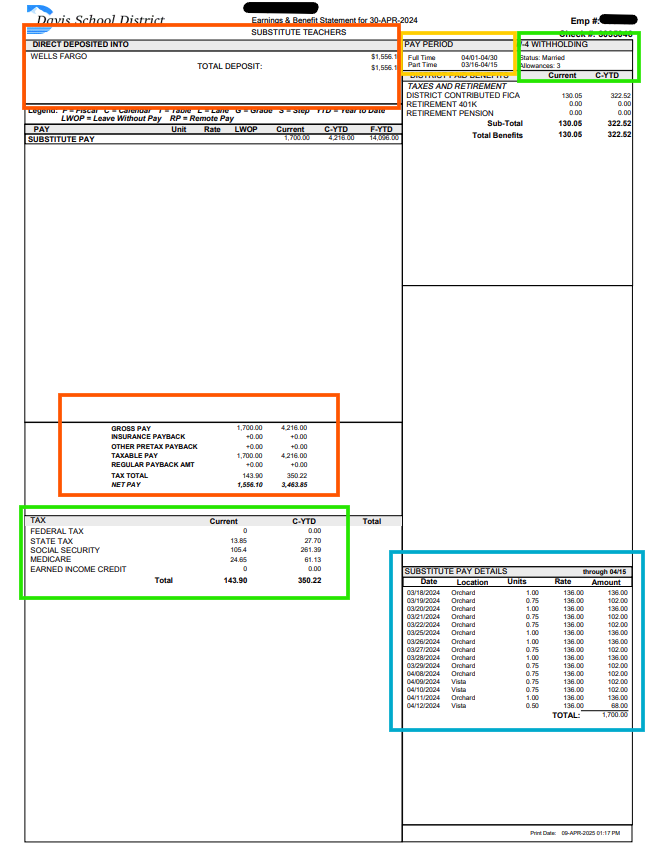
Understanding My Paystub

Why Understanding Your Paystub is Important
Your paystub is more than just a piece of paper or a digital file—it’s a snapshot of your financial life and employment benefits. Taking a few minutes each payday to review it can help you stay informed, protect your money, and make smarter financial decisions.
✅ Catch Payroll Errors : Mistakes happen. You might be underpaid, overcharged for benefits, or taxed incorrectly. Reviewing your paystub regularly helps you catch and correct errors quickly.
✅ Stay Tax-Smart: Understanding how much is withheld for taxes helps you avoid surprises during tax season. If too little is withheld, you could owe money; too much, and you’re giving the government an interest-free loan.
✅ Track Benefits: Your paystub often shows what you're paying for health insurance, retirement contributions, and other perks. It’s a great way to see what your employer is offering and how much it's costing you.
✅ Budget Better: Knowing your actual net income helps you create a more accurate budget. Gross pay might look good on paper, but your take-home pay is what counts for your monthly expenses.
✅ Support for Loan Applications: Lenders often request paystubs as proof of income when you apply for loans, credit cards, or rental housing. Being familiar with your paystub helps you provide accurate information and spot any red flags.
Let's look at a few paystubs together:
What's on a paystub? Most paystubs include the following key components:
1. Personal Information
Employee Name and ID (top): Identifies the paystub as yours.
Table, Grade & Step (yellow highlighted line): Identifies not only job title, but location, daily contracted hours, Table, Grade, and Step.
Pay Period (yellow box at top): Shows the start and end dates for the period you’re being paid. For full-time employees, it is from the first of the month to the last day of the month. (257- day employees, please note that when you terminate, your last check will pay for the days you have worked in your final month... example: term on the 21st, you will be paid for anything worked from the 1st - 21st of that month = final paycheck).
For part-time and sub employees, anything worked from the 16th of the previous month to the 15th of the current month is paid out on the last business day of the month.
Bank information and total deposit/net pay: (orange box at top).
2. Earnings
Gross Pay (orange box in middle): The total amount you earned before any deductions.
Regular Hours (pink arrow) : How many hours you worked and at what rate (for full-time employees, see how your pay is calculated by clicking HERE for an example). Part-time employees, the units should match your time-clock hours. Substitutes, please look at the bottom right (blue box) to verify your sub hours are correct. It will list the dates, locations, and units, and rate of pay.
Extra Pay (red arrow): Any additional earnings separate from your base pay. This includes pay entered at the school for trainings or extra duty. Those entries will have an RP in front of it.
3. Deductions
Taxes (green box at the bottom): Federal, state, and local income taxes withheld. This is based solely on your W4 settings (green box at the top) and your income.
Social Security and Medicare (FICA) (green box on bottom): Mandatory contributions to government programs.
Benefits (light and dark purple arrows): Deductions for health insurance, retirement plans (like 401(k)), and other employer-provided benefits. (Pre and Post taxes)
Other Deductions (light and dark purple arrows): Union dues, wage garnishments, or voluntary contributions. (Pre and Post Taxes).
4. Net Pay
This is your “take-home” pay—what actually gets deposited into your bank account after all deductions.
5. Year-to-Date (YTD) Totals
C-YTD: Shows cumulative totals for earnings and deductions over the course of the calendar year.
F-YTD: Shows cumulative totals for earnings and deductions over the course of fiscal school year (July 1st-June 31st).
6. District Paid Benefits (blue box): These are benefits and taxes paid by the District on your behalf. These payments are NOT deducted from your pay.
The retirement pension amount listed on your paycheck is not unique to you individually. It represents the contribution the district is required to make to the general pension fund for your position. To receive a pension, you must meet specific age and years of service requirements. This applies to both Tier 1 and Tier 2 Hybrid Retirement plans. For detailed information about your plan, please visit the URS website.
If you are enrolled in the Tier 2 Defined Contribution (DC) 401(k) Plan, please note that this plan does not include a pension benefit. The pension listed on your pay check represents the contribution the district is required to make to the general pension fund for your position. The Retirement 401K line is what DSD contributed to your 401K. For detailed information about your plan, please visit the URS website.
If you notice an error on your paystub, don’t panic—but do act quickly.
📞 Call Payroll at 801-402-5285
Let us know what the issue is and we will work with you and your school location to resolve the matter.
"Davis School District provides for oversight and efficient use of public and private funds"
Provide internal and external oversight.
Provide ongoing training in fiscal management.
Operate finances with transparency.
Align fiscal resources with Board goals.



